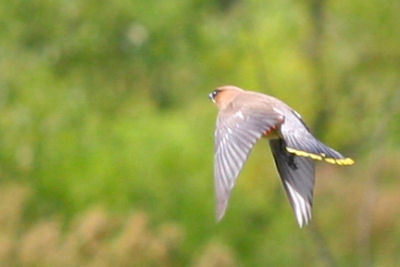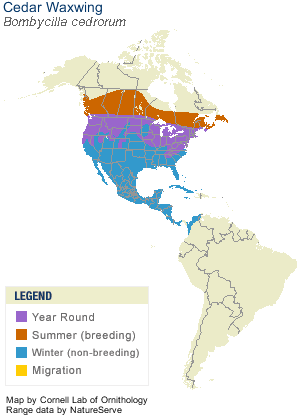 |
Canku Ota
|
 |
|
(Many Paths)
|
||
|
An Online Newsletter
Celebrating Native America
|
||
|
December 1, 2010 - Volume
8 Number 12
|
||
|
|
||
|
Cedar Waxwing
Bombycilla cedrorum |
||
|
Keys to identification
Backyard
Tips
Get
Involved Help track the nomadic movements of Cedar Waxwings by reporting your sightings to eBird Learn how to find and monitor bird nests for NestWatch |
|
|
||
|
|
||
| Canku Ota is a free Newsletter celebrating Native America, its traditions and accomplishments . We do not provide subscriber or visitor names to anyone. Some articles presented in Canku Ota may contain copyright material. We have received appropriate permissions for republishing any articles. Material appearing here is distributed without profit or monetary gain to those who have expressed an interest. This is in accordance with Title 17 U.S.C. Section 107. | ||
|
Canku Ota is a copyright ©
2000, 2001, 2002, 2003, 2004, 2005, 2006, 2007, 2008, 2009, 2010
of Vicki Barry and Paul Barry.
|
||
 |
 |
|
|
The "Canku
Ota - A Newsletter Celebrating Native America" web site and
its design is the
|
||
|
Copyright ©
1999, 2000, 2001, 2002, 2003, 2004, 2005,
2006, 2007, 2008, 2009, 2010
of Paul C. Barry.
|
||
|
All Rights Reserved.
|
||
 A
treat to find in your binocular viewfield, the Cedar Waxwing is
a silky, shiny collection of brown, gray, and lemon-yellow, accented
with a subdued crest, rakish black mask, and brilliant-red wax droplets
on the wing feathers. In fall these birds gather by the hundreds
to eat berries, filling the air with their high, thin, whistles.
In summer you’re as likely to find them flitting about over
rivers in pursuit of flying insects, where they show off dazzling
aeronautics for a forest bird.
A
treat to find in your binocular viewfield, the Cedar Waxwing is
a silky, shiny collection of brown, gray, and lemon-yellow, accented
with a subdued crest, rakish black mask, and brilliant-red wax droplets
on the wing feathers. In fall these birds gather by the hundreds
to eat berries, filling the air with their high, thin, whistles.
In summer you’re as likely to find them flitting about over
rivers in pursuit of flying insects, where they show off dazzling
aeronautics for a forest bird. Color
Pattern
Color
Pattern Find
This Bird
Find
This Bird